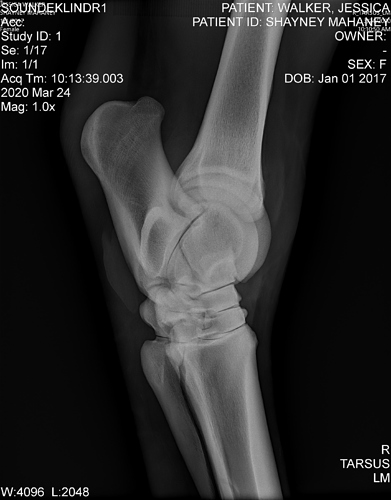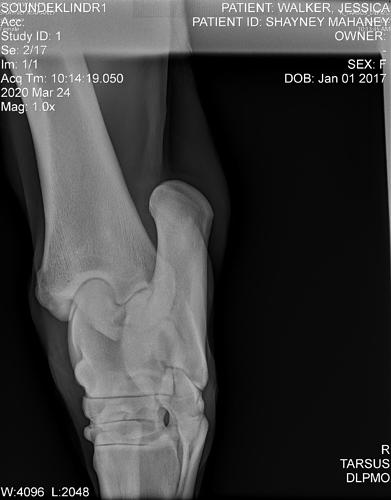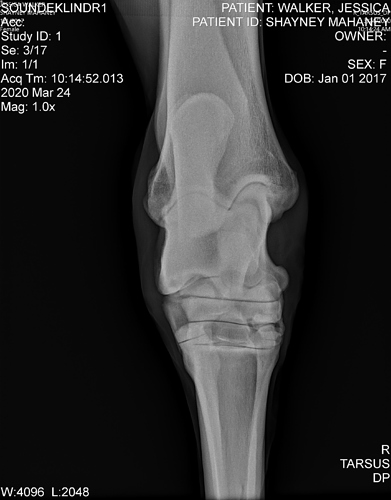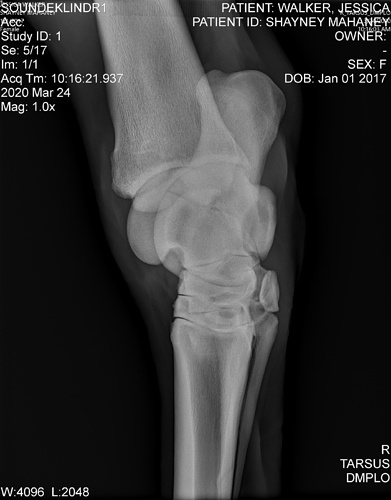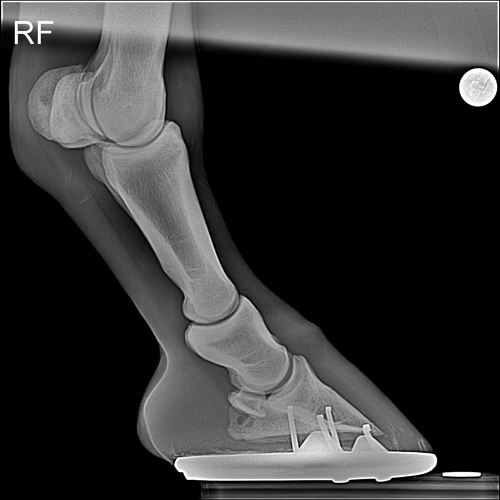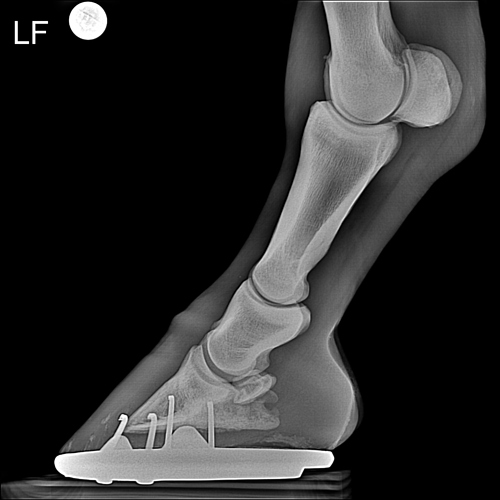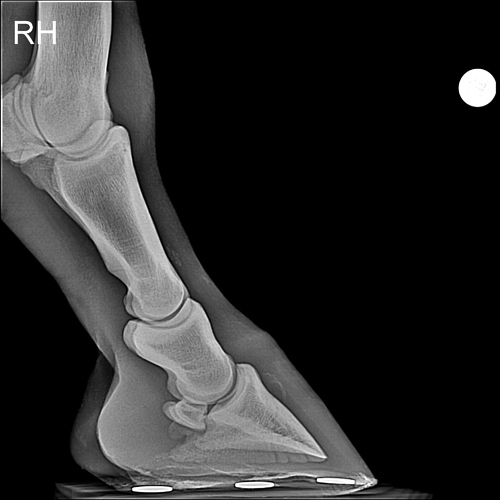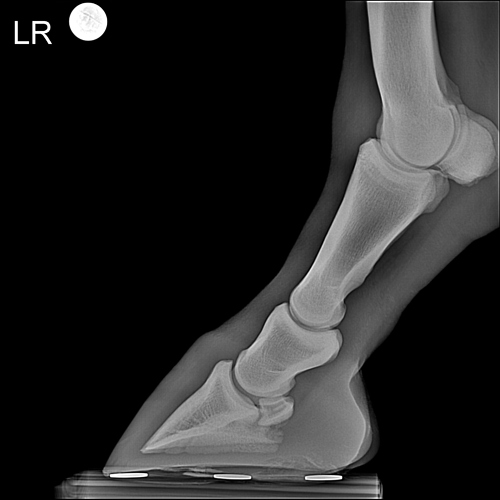The backstory:
6 yo mare, TB. Been slightly off on her left hind since mid-summer, but would work out of it after her first trot. I have spent tens of thousands of dollars on this type of lameness in previous horses, and have learned not to chase minor issues that aren’t causing problems elsewhere. I vowed if it got worse, I would address it.
Fast forward to about a month ago. Started noticing lumbar soreness. Open hock sore on opposing leg showed up. Mare would swap to the left lead whenever she could (when loose, not under saddle). Pooped in her water bucket for the first time in ages. Started rushing fences, bolting on the back side. Dragging the toe. Wasn’t warming up out of it as before, could feel how crooked she was under saddle.
Time for the vet!
We flexed and xrayed many things (most per my request, for other reasons), and found a spur on the left hock. I’m guessing this probably started when she got a bout of cellulitis on that leg due to an imbedded piece of bedding. Since that bout of cellulitis, I added Cu/Zn/E to her diet and knock wood have not had cellulitis since.
We injected the upper and lower joints, it remains to be seen if it solves the lameness. Other things we did: xrayed feet (flat or NPA on all 4, talked to farrier already), ultrasounded the suspensory (my vet thinks I’m crazy but I wanted it confirmed to be a non-issue), xrayed fetlock (no issue), xrayed spine (interestingly, the mild T16/T17/T18 bony changes seen in her PPE when she was 3yo are completely gone, she’s got plenty of room now).
Here’s a picture of Vet’s laptop screen, he will email me the full size copies today (I hope).
This leg also twists before coming off the ground - it was noted in her Hanoverian inspection. I also rewatched all the videos I took of free jumping practice, and noticed her kicking out that left hind when over the fence more often than not.
So, long story to ask - tell me about hock spurs. I imagine this will be an ongoing maintenance thing for the rest of her life? Success stories - non success stories - other therapies that help… give me the works.

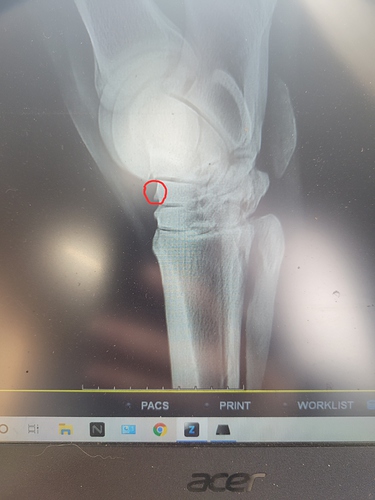
 She even has residual effusion from it, looking like a spavin but originated from a nasty case that she ended up at New Bolton over.
She even has residual effusion from it, looking like a spavin but originated from a nasty case that she ended up at New Bolton over. I never noticed any response from him when I had him on joint supplements but have recently started him on an MSM trial to which he has responded positively. I don’t do too much in the way of post-work care however it always depends on the many factors such as footing conditions, number of jump efforts or intensity of work done, length of trailer ride, weather/temperature, training schedule, etc. But most days he just gets a few minutes of cold hosing on his hocks and then a liniment bath when I hose him off and turned out. The only routine sign of the spur is that he will kick out a few times with that left hind for hoof picking or farrier work.
I never noticed any response from him when I had him on joint supplements but have recently started him on an MSM trial to which he has responded positively. I don’t do too much in the way of post-work care however it always depends on the many factors such as footing conditions, number of jump efforts or intensity of work done, length of trailer ride, weather/temperature, training schedule, etc. But most days he just gets a few minutes of cold hosing on his hocks and then a liniment bath when I hose him off and turned out. The only routine sign of the spur is that he will kick out a few times with that left hind for hoof picking or farrier work.